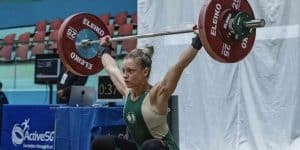Concussion in Sport

Over the last 3 years there has been an exponential growth in public and participant awareness of concussion in sport. While media coverage has focused on individual cases in professional sport, most concussions occur at the amateur level. Ethos Health recently hosted a talk for medical professionals and sports trainers by Dr Andrew Gardner, co-director of the Hunter New England Health Sports Concussion Clinic. With the start of the season for contact and high-risk sports like hockey and the football codes just around the corner, this blog will help parents, players, and club officials understand how to identify sports concussion and ensure a safe return to play.
What is a concussion?
A concussion is a traumatic brain injury that is caused by a blow to the head or other injury that jars or shakes the brain inside the skull. Normally the fluid around your brain acts like a cushion that keeps your brain from banging into your skull, but if your head or body is hit hard enough, the brain can impact the skull and cause injury. You don’t have to pass out (lose consciousness) to have a diagnosis of “concussion” and only about 10% of concussions involve a loss of consciousness, and only 20% involve a loss of memory.
Signs of concussion
There are many signs that indicate you may have had a concussion. These include, but are not limited to:
- Memory loss
- Fatigue
- Persistent headache
- Nausea
- Poor concentration
- Feeling slowed down
- Dizziness
- Blurred vision
- Light/noise sensitivity
These may come on immediately, or they may be delayed. Remember these symptoms are not unique to concussion and occur frequently in the general population – so it is important to seek a medical practitioner’s opinion to diagnose concussion.
What do you do if a player is concussed?
In the past the usual approach might have been to ‘suck it up’ and return to play, but we now know that this is an unsafe approach to player wellbeing.
Most sports now have specific concussion guidelines for concussion management, but the common principles are summarised in the four steps below:
Step 1. Immediately remove from play – “If in doubt, sit them out”
Step 2. Refer to a medical practitioner
Step 3. Rest: 24-48 hours with minimal physical and mental stimulation
Step 4. Follow graded return to play (GRTP) protocol
Before beginning the Graded Return Play (GRTP) process (Step 4) the player must:
- Be symptom-free, and
- Have sat out the mandatory rest from play periods, which vary by sport and age
| Sport | Governing body | 18 and under | 19 and over |
| Rugby Union | Rugby Australia | 14 days | 7 days |
| Rugby League | NRL | “longer timeframes” | 2 days |
| AFL | AFL | “longer timeframes” | 2 days |
| Soccer | FIFA / FFA | “longer timeframes” | 1 day |
| Hockey Netball Basketball | Refer to Australian Sports Commission policy | 12 days | 2 days |
So if the major sporting bodies can’t agree on some simple timeframes, what should you do?
Our advice is that all players follow the mandatory rest periods specified by Rugby Australia. In regards to sports concussion, rugby has led the way in Australia and it is not unreasonable to expect other sports will belatedly adopt their recommendations as further medical evidence emerges.
After the mandatory rest period has elapsed AND all signs or symptoms have resolved, the player can commence the Graded Return To Play (GRTP) protocol.
| Stage | Activity | Objective |
| 1. Mandatory rest (see table above) | Physical and mental rest | Recovery |
| 2. Light aerobic exercise | Easy walking, swimming or exercise bike | Increase heart rate |
| 3. Simple sport specific exercise | Isolated running, passing, shooting, kicking drills | Add movement |
| 4. Non-contact training drills | More complex training drills eg run + pass, backline drills | Exercise, coordination and decision making |
| 5. Full contact practice | Following medical clearance, participate in normal training | Restore confidence, allow coaches to assess skills |
| 6. Return to play | Normal game play |
Progression through GRTP
The athlete can progress one stage per day provided no signs or symptoms are provoked. If signs or symptoms are provoked, the athlete must ‘go back’ one stage for at least one symptom-free day before they retry.
REMEMBER
While signs or symptoms remain, it is highly unlikely that a full recovery has occurred. Complications from concussion are rare but significantly increased by allowing the athlete to return to activity before they have recovered completely.
If you have any questions or have had a recent concussion and wish to return to sport safely, please contact us or book an online appointment today






